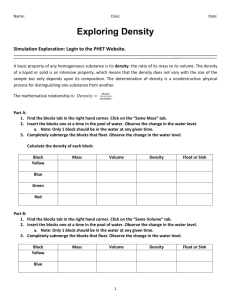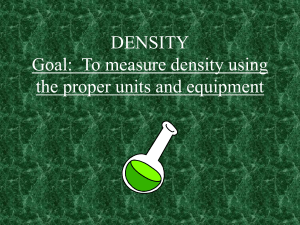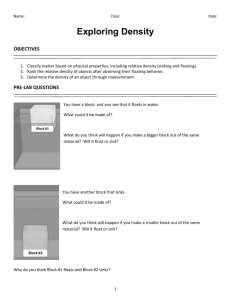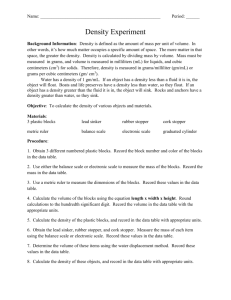Lesson: Sink or float (Word doc)
advertisement
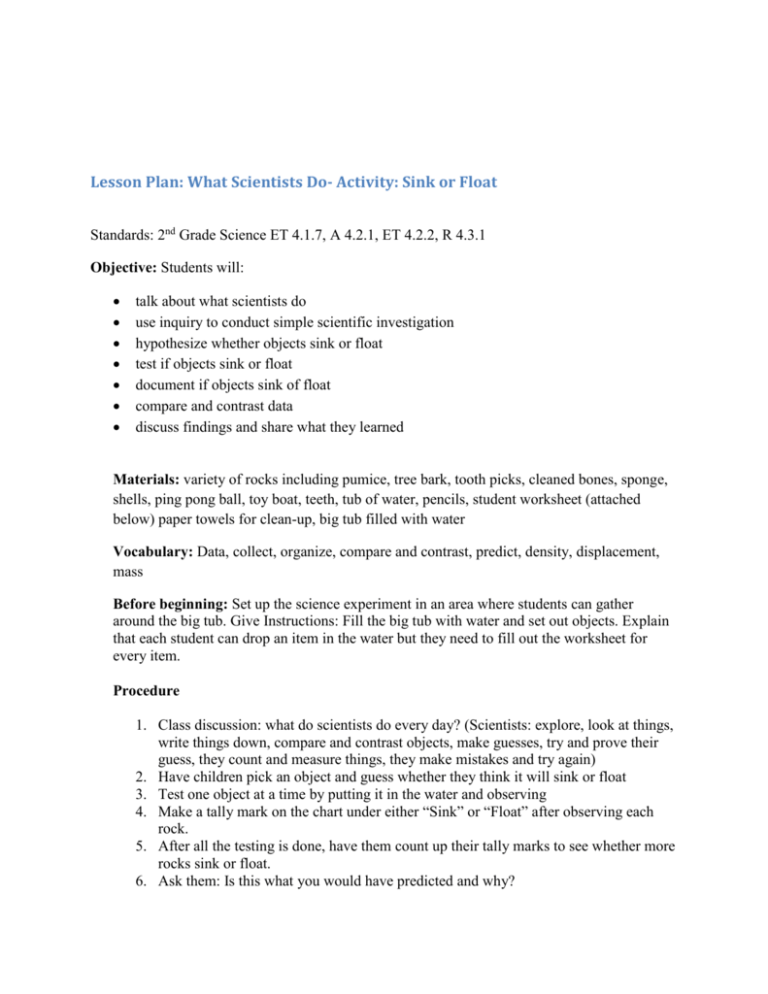
Lesson Plan: What Scientists Do- Activity: Sink or Float Standards: 2nd Grade Science ET 4.1.7, A 4.2.1, ET 4.2.2, R 4.3.1 Objective: Students will: talk about what scientists do use inquiry to conduct simple scientific investigation hypothesize whether objects sink or float test if objects sink or float document if objects sink of float compare and contrast data discuss findings and share what they learned Materials: variety of rocks including pumice, tree bark, tooth picks, cleaned bones, sponge, shells, ping pong ball, toy boat, teeth, tub of water, pencils, student worksheet (attached below) paper towels for clean-up, big tub filled with water Vocabulary: Data, collect, organize, compare and contrast, predict, density, displacement, mass Before beginning: Set up the science experiment in an area where students can gather around the big tub. Give Instructions: Fill the big tub with water and set out objects. Explain that each student can drop an item in the water but they need to fill out the worksheet for every item. Procedure 1. Class discussion: what do scientists do every day? (Scientists: explore, look at things, write things down, compare and contrast objects, make guesses, try and prove their guess, they count and measure things, they make mistakes and try again) 2. Have children pick an object and guess whether they think it will sink or float 3. Test one object at a time by putting it in the water and observing 4. Make a tally mark on the chart under either “Sink” or “Float” after observing each rock. 5. After all the testing is done, have them count up their tally marks to see whether more rocks sink or float. 6. Ask them: Is this what you would have predicted and why? 7. In a group discussion talk about why certain objects floated: displacement, size, density, hollowness, etc… 8. Ask them to write down the procedure used to complete the experiment like a scientist recording the experiment procedure. Have them turn in their papers. Background Information: Displacement explains why objects sink or float. Displacement occurs when you place something in a fluid and it moves the fluid out of its way. You can watch displacement at work when you drop an object in a cup of water and the water level rises. The object pushes the water out of its way making the water rise. An object will sink if it weighs more than the water it displaces and an object will float if it weighs less than the water it displaces. The Greek mathematician Archimedes discovered that the amount of water displaced by an object depends on the mass of that object. Mass is the amount of matter in a substance. Dense objects have more mass than less dense objects. Thus, dense objects that do not displace much water will sink while less dense objects that displace a lot of water will float. The shape of an object can also help it float. For example, a ball of clay will sink but a canoe shape made from the same amount of clay can float because it pushes more fluid out of its way in relation to its weight. The amount of air inside an object can also help it float. Boats float despite their heaviness due to the large amount of air inside the hull. Hollow objects such as ping pong balls or empty plastic bottles float better than solid objects like baseballs or filled water bottles due to the air inside-air is lighter than water (in a liquid or solid state). Follow- up activity: Water Line Give students a cup of water and small items that sink or float. Remind students that when an object is placed in water, the level will rise. Have them predict how much they think the water will rise for each item. Students should mark the original water level and draw their predictions on the side of the cup. Children can make their predictions based on the weight, shape, size and density of their objects. They can use different colors of marker to distinguish their own predictions. Then have them drop different items into the cup, make observations, and record their data. Encourage them to measure with a ruler to see how much the water rose. Discuss findings. Sink or Float: Science Experiment OBJECT Ex: wood GUESS Name: ______________ FLOAT ↑ SINK↓ ↑ CORRECT GUESS TOTAL TOTAL TOTAL



